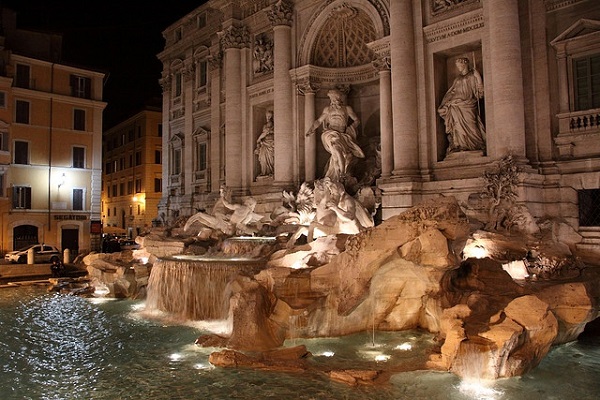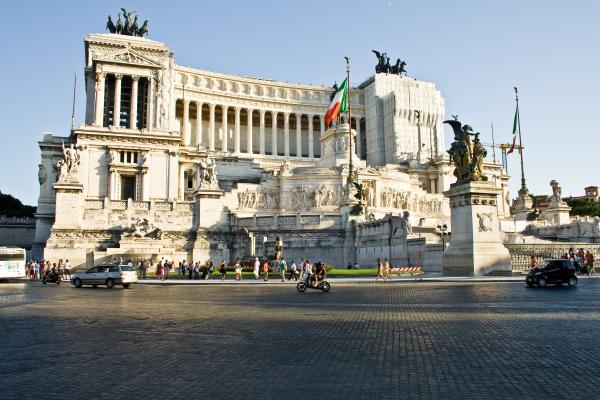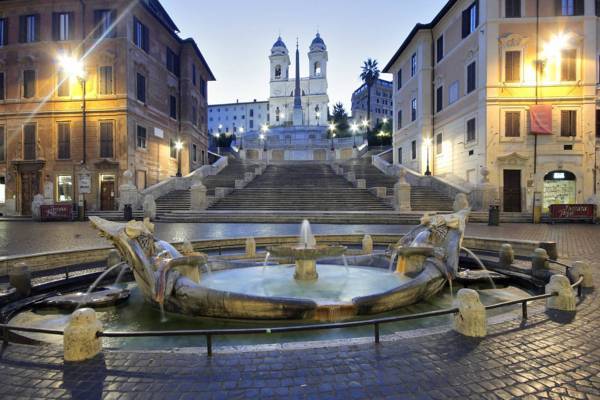Welcome to Trevi Palace Hotel on the heart of Rome.
You can reach all this treasures only in 10 – 15 minutes walking distance.
You can reach all this treasures only in 10 – 15 minutes walking distance.

The first fountain Pope Nicholas V built in the middle of the 15th century to celebrate the reactivation of the ancient aqueduct which Agrippa constructed in order to bring water to his baths near the Pantheon.
The fountain you see now in Piazza della Fontana di Trevi was designed by Nicola Salvi for Pope Clement XII. It took 30 years to complete and was inaugurated May 1762.
There is no street with a direct approach to the Trevi Fountain, so you hear it before you see it.

Piazza Venezia is a major circus and the central hub of Rome, Italy, in which many thoroughfares intersect, like Via dei Fori Imperiali and Via del Corso. It takes its name from Venice (“Venezia” in Italian), after the Venetian Cardinal, Pietro Barbo (later Pope Paul II) who had built Palazzo Venezia, a palace set next to the nearby church of Saint Mark, the patron saint of Venice. Palazzo Venezia was the former embassy of the city of the Republic of Venice to Rome.
The piazza or square is at the foot of the Capitoline Hill and next to Trajan’s Forum. The main artery, the Viale di Fori Imperiali starts there, leading past the Roman Forum and to the Colosseum. It is dominated by the imposing Monument to Vittorio Emanuele II, first king of Italy. In 2009, during excavations for the Rome C Metro Line, ancient remains of what has been identified as emperor Hadrian’s Athenaeum were unearthed in the middle of the square.

Piazza di Spagna, at the bottom of the Spanish Steps, is one of the most famous squares of Rome (Italy). It owes its name to the Palazzo di Spagna, seat of the Embassy of Spain among the Holy See.
In the middle of the square is the famous Fontana della Barcaccia, dating to the beginning of the baroque age, sculpted by Pietro Bernini and his son, the more famous Gian Lorenzo Bernini.
At the right corner of the Spanish Steps there is the house of the English poet John Keats, who lived there until his death in 1821: nowadays it has been changed into a museum dedicated to him and his friend Percy Bysshe Shelley, full of books and memorabilia of English Romanticism. At the left corner there is the Babington’s tea room, founded in 1893.

The Colosseum or Coliseum, also known as the Flavian Amphitheatre (Latin: Amphitheatrum Flavium; Italian: Anfiteatro Flavio or Colosseo) is an elliptical amphitheatre in the centre of the city of Rome, Italy. Built of concrete and stone,it was the largest amphitheatre of the Roman Empire, and is considered one of the greatest works of Roman architecture and engineering. It is the largest amphitheatre in the world.
The Colosseum is situated just east of the Roman Forum. Construction began under the emperor Vespasian in 70 AD, and was completed in 80 AD under his successor and heir Titus. Further modifications were made during the reign of Domitian (81–96). These three emperors are known as the Flavian dynasty, and the amphitheatre was named in Latin for its association with their family name (Flavius).